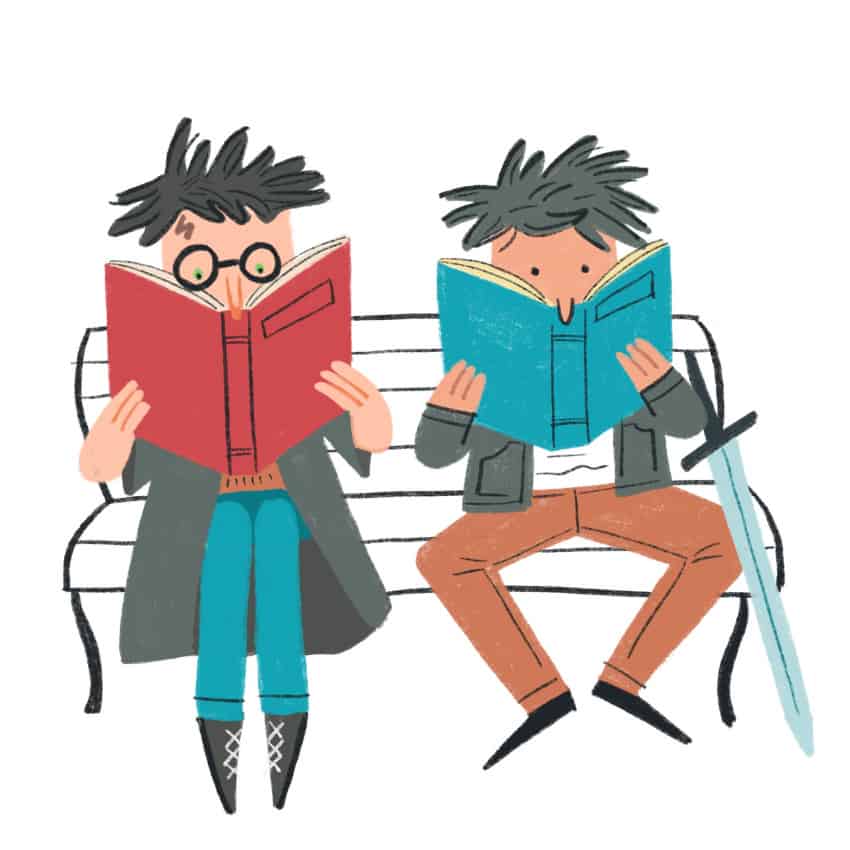
With the announcement of a TV series adaptation of the Percy Jackson and the Olympians series by Rick Riordan, now seems like a great time to look into the wide array of characters in these classic childhood stories.
Let’s see how these books compare with another of the most widely loved stories in young literature of the last few decades: the Harry Potter series by J.K. Rowling. Riordan’s earlier works, most notably the Percy Jackson books, aren’t as thoroughly riddled with diverse representation as much of the literature we can find today. However, Riordan’s works have become much more inclusive in recent years, whereas Rowling’s writing is still quite lacking.
The first of the Percy Jackson books, released in 2005, features characters that are mostly, if not all, white and presumably cisgender and heterosexual. However, Riordan still delved into some topics not often discussed: learning disabilities and neurodevelopmental disorders in youths. The books included characters with dyslexia, ADHD and traumatic and abusive pasts — a rarity in children’s literature at the time.
Following the success of these initial books, Riordan went on to publish multiple other series with the publisher Disney Hyperion. From there on, Riordan slowly began introducing more diversity into his characters.
In the books he wrote following the Percy Jackson series, more of the main characters had different cultural and ethnic backgrounds. He also started introducing queer characters, with a greater diversity of gender identities appearing in his latest works.
Riordan’s portrayal of diversity is so effective because he weaves his character’s backgrounds and identities deep into the story, while ensuring that these traits do not come to solely define them.
On the other hand there is Harry Potter. The series was groundbreaking on many fronts, and is filled with great storytelling and fun characters. However, author J.K. Rowling did not include the same sort of diversity in her stories that Riordan does. While she does touch on classism, bullying and abusive households throughout the series, Rowling’s books are lacking in the variety of backgrounds and identities that make Riordan’s books a joy to read.
Harry Potter is lacking in racial, sexual and gender diversity, with some few exceptions that are questionable in their own right — such as the most visible Asian character being named Cho Chang.
Rowling has also come under fire for integrating diversity into her books only after the series was done, making it seem like it was only added as an afterthought. More recently, Rowling has expressed views widely condemned as transphobic.
For many children, books, movies and TV shows are some of their earliest teachers. Characters become their role models, and when a kid can look down at a page, or up at a screen, and see a character that looks or feels the way they do, it goes a long way towards building that kid’s self-confidence and helps validate their identity.
When children read Harry Potter, they read about kids who are heroes, but not always about kids like them. When children read Percy Jackson, they’re still reading about heroes, but they’re reading about heroes who have experienced trauma, abuse, who have disabilities, who come from all backgrounds and who identify in ways that are not always accepted by society.
When kids are able to see themselves reflected in the pages like this, it gives them an opportunity to start seeing and believing in their own magic.
—
Beth Zentner
Graphic: Anh Phan | Design Editor